Boost Your Brand with Top-Quality Commercial 3D Rendering Services

Rendergeek
May 20th, 2024
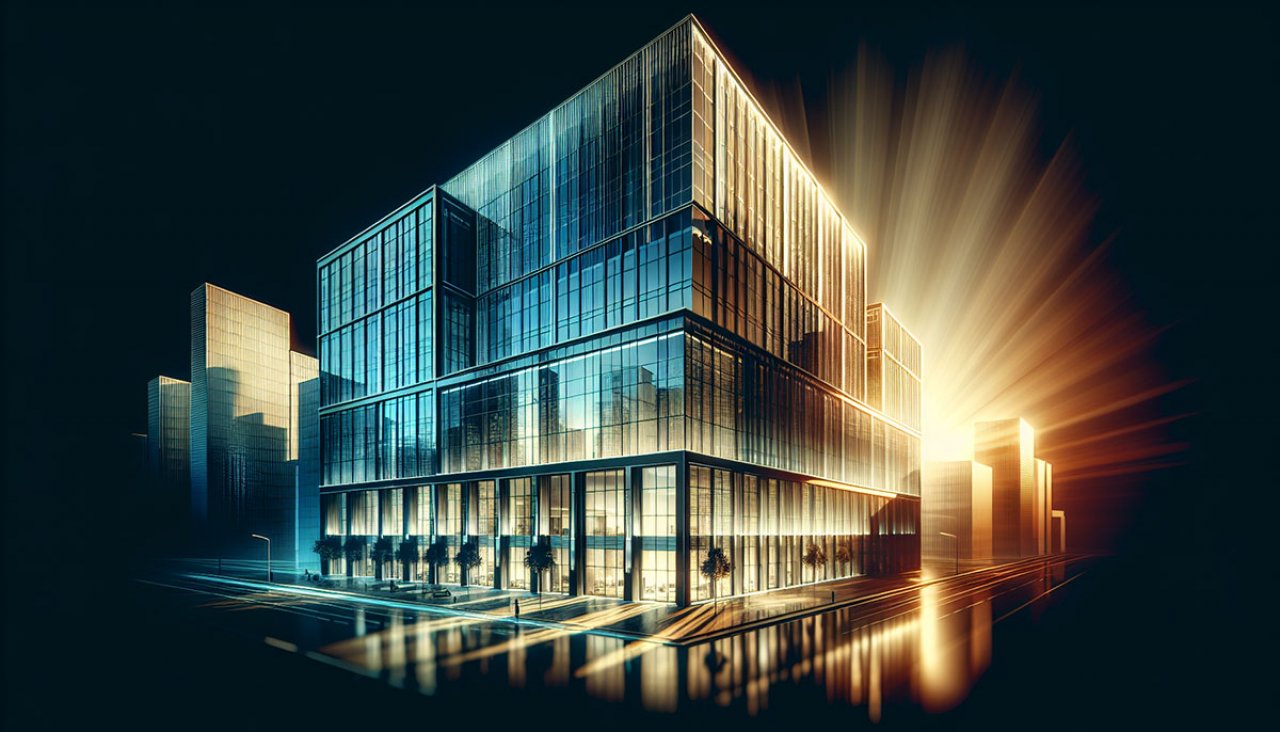
When it comes to commercial projects, presenting a clear and impactful vision is crucial. Commercial 3D rendering steps in to offer this clarity, transforming ideas into detailed visual representations for enhanced decision-making and effective communication. In this article, we dive into the essentials of commercial 3D rendering, examine its role across industries, and discuss how to select the ideal rendering service to meet your project’s specific needs.
The Power of Commercial 3D Rendering
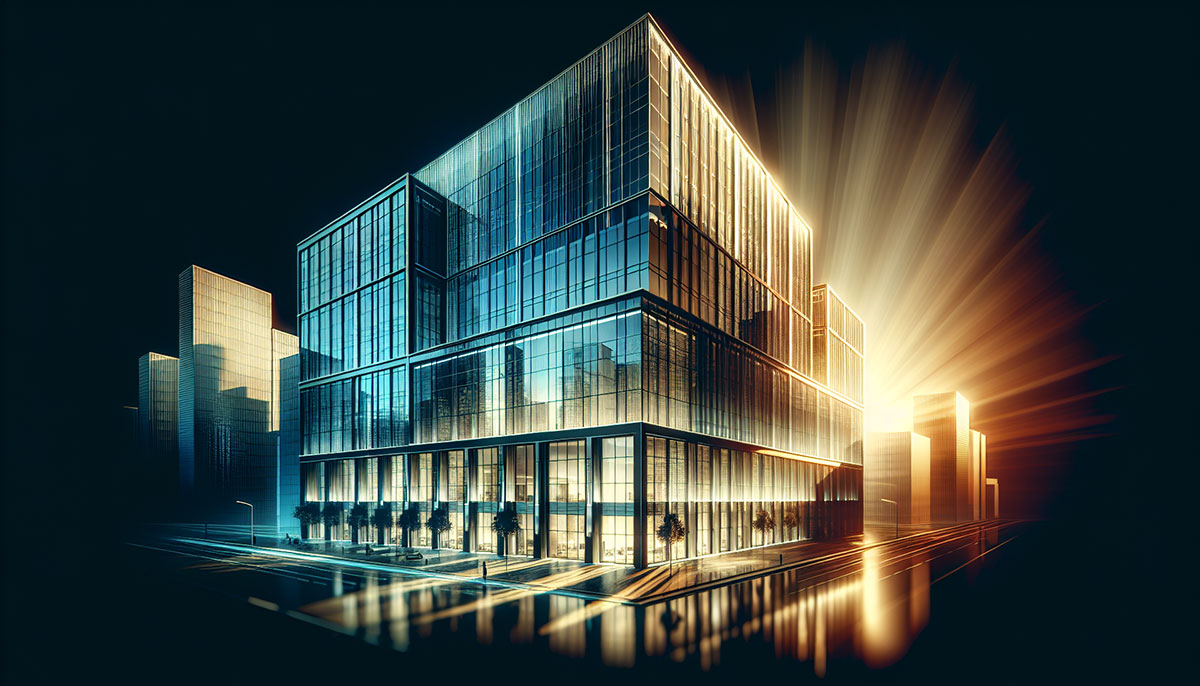 Generated by SurferAI
Generated by SurferAI
Commercial 3D rendering is a beacon of innovation in the ever-evolving world of design and marketing, boosting the industry to a staggering $7.3 billion market. The technology’s tentacles reach far and wide, enveloping sectors such as construction, real estate, and architecture, and serving as a testament to its wide-ranging impact.
The demand for advanced rendering is insatiable in North America, where firms, cutting-edge software, and new graphic processing units are fueling market growth. Professionals who harness the power of 3D rendering not only distinguish themselves but also pave the way for unparalleled project success.
Industrial Visualization
Stepping into the industrial domain magnifies the potential of commercial 3D rendering. Here, every component, from floor plans to aerial views and the intricate interiors of industrial buildings, is captured with precision. This technology streamlines design processes, delivering significant time and cost savings by obviating the need for extensive manual model crafting while ensuring adherence to design specifications.
At the heart of industrial visualization lies the ability to create realistic models of manufacturing plants and warehouses, providing a visual anchor for complex projects.
Real Estate Renderings
Real estate renderings play a similar role to the opening scene of a movie, they create a captivating first impression that draws attention and engages potential buyers. With a palette of realistic lighting, textures, and materials, these visualizations paint a picture of properties in their finest light, showcasing the property’s potential and facilitating the visualization of structural floor plans. In the real estate industry, these renderings are essential tools for attracting and retaining buyer interest.
Take the Riverside Wharf Development in Miami or the Hayy Al Sharq Development in Oman—both utilized real estate renderings for project approval and marketing, demonstrating the tangible benefits in the real-world application of this technology.
Marketing and Advertising
Commercial rendering plays an indispensable role in marketing and advertising, especially when it comes to 3D rendering. It propels a brand’s reach into the stratosphere, enabling the use of renders on social media platforms, dynamic videos, and animations that give a broader perspective of properties.
Immersive VR experiences are becoming a linchpin in marketing and sales strategies, allowing potential clients to vividly experience a product or space in a realistic manner. In an arena where competition is fierce, exemplary 3D renderings serve as a key differentiator, engaging potential investors or buyers with high-quality visual content and setting a brand apart.
Types of Commercial Architectural Visualizations
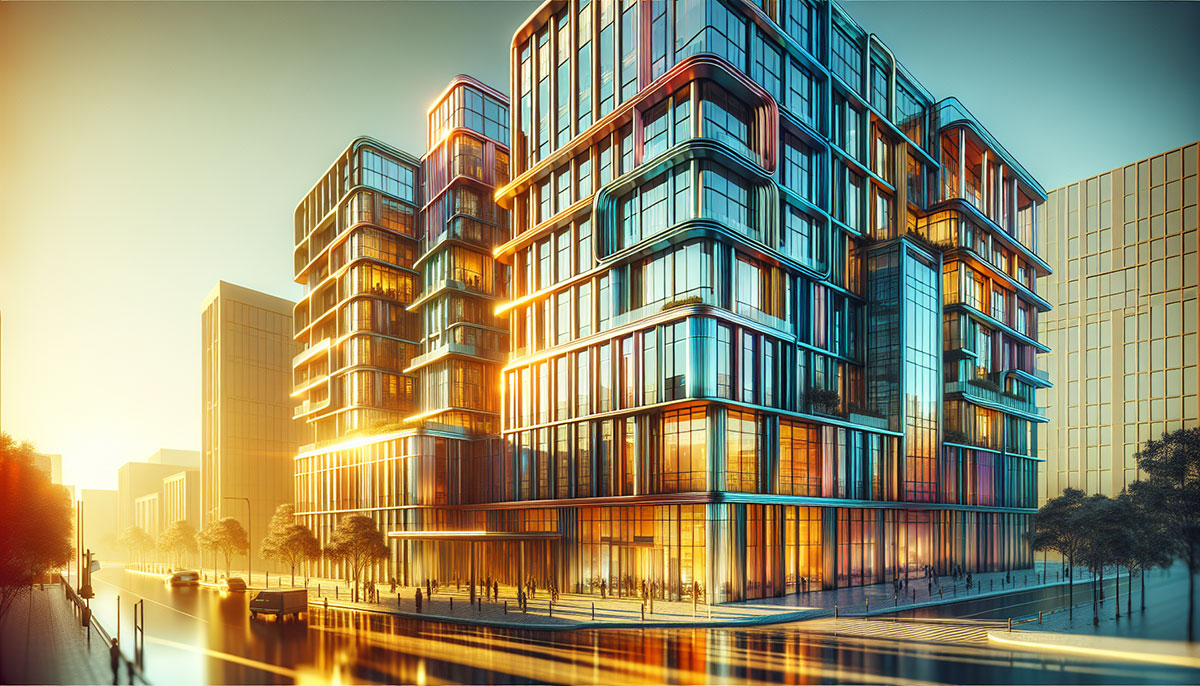 Generated by SurferAI
Generated by SurferAI
Looking beyond, we discover that commercial architectural visualizations comprise a rich tapestry of detailed 3D models, textures, and lighting, highlighting every aspect and advantage of a project. These visualizations are the very essence of architectural storytelling, allowing for simulations of different times of day or weather conditions, and even incorporating surrounding environments to enhance realism and appeal in the realm of architectural visualization. By utilizing commercial architectural rendering services, clients can experience a project’s full potential before it comes to life through the expertise of a visualization studio.
With five widely used types available, design professionals can choose the perfect visualization to convey the unique narrative of their commercial projects.
Exterior Commercial Renderings
Exterior rendering serves as a window, offering a comprehensive overview of commercial spaces in proportion to their surroundings. These renderings portray the building’s form in detail, including roads and vegetation, providing stakeholders with a full perspective of how the building integrates with its neighborhood.
The journey from gathering information to the final post-processing enhances the final image presentation, attracting stakeholders with compelling visuals that are designed to make a lasting impression.
Interior Commercial Renderings
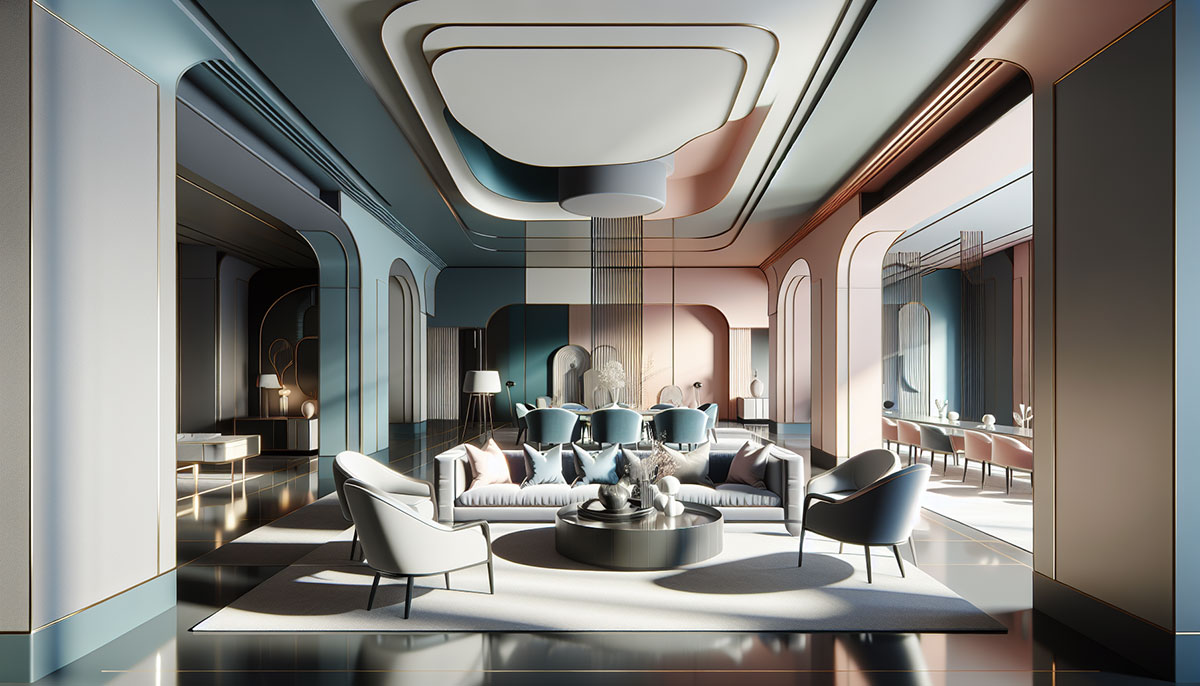 Generated by SurferAI
Generated by SurferAI
Interior commercial renderings invite viewers inside, demonstrating how a property will look, feel, and function from within. Architects and designers leverage commercial 3D renderings to feature detailed interior elements, integrating moodboards, sketches, and material samples into a cohesive visual narrative. This flexibility extends to exhibiting multiple design options, such as different flooring choices, providing clients with a clear and visually engaging array of possibilities.
It is through these renders that architects and clients can evaluate and finalize design details, ensuring that the final implementation aligns with expectations.
Landscape Commercial Renderings
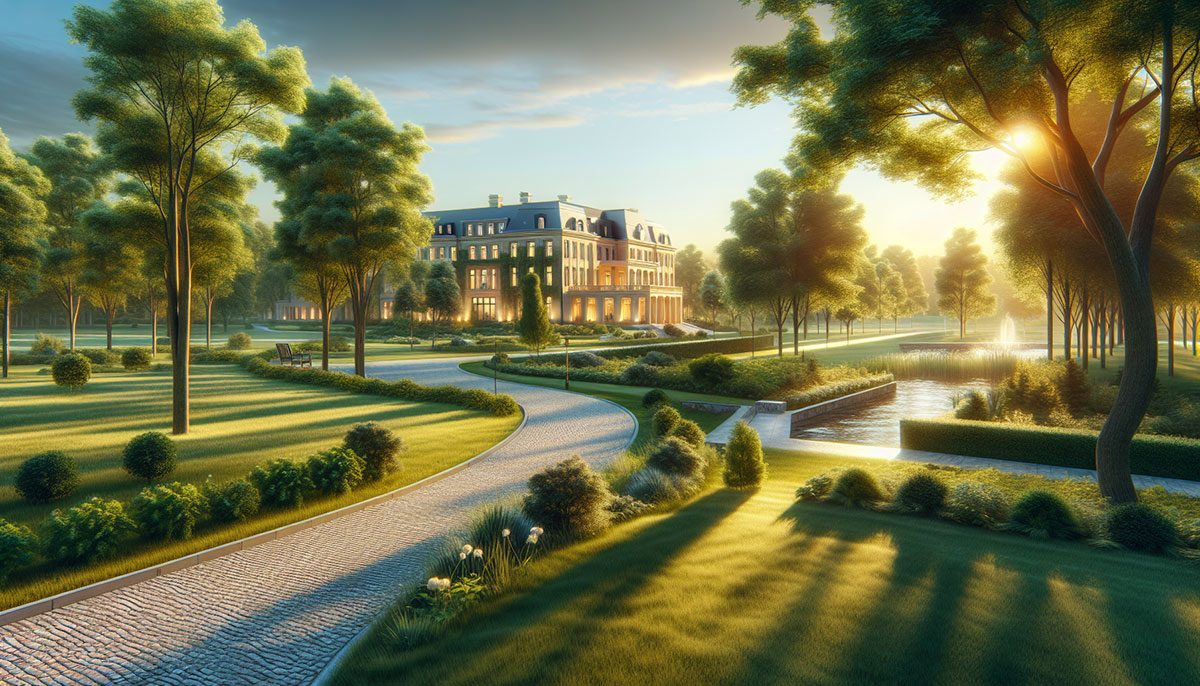 Generated by SurferAI
Generated by SurferAI
Landscape renderings are pivotal in visualizing the surroundings, lighting, and outdoor features, which can significantly impact the overall presentation of commercial properties. These renderings are meticulously detailed to include elements such as fences, plants, and pathways, providing a comprehensive view of the property’s exterior. When commissioning landscape renderings, it is important to consider the target audience and which specific areas of the commercial real estate should be emphasized.
For example, commercial sports facilities, like the Ural Forest commercial project in Ekaterinburg, Russia, have benefited from landscape renderings, aiding in the visualization and presentation of outdoor recreational spaces.
Virtual Reality and Commercial 3D Rendering
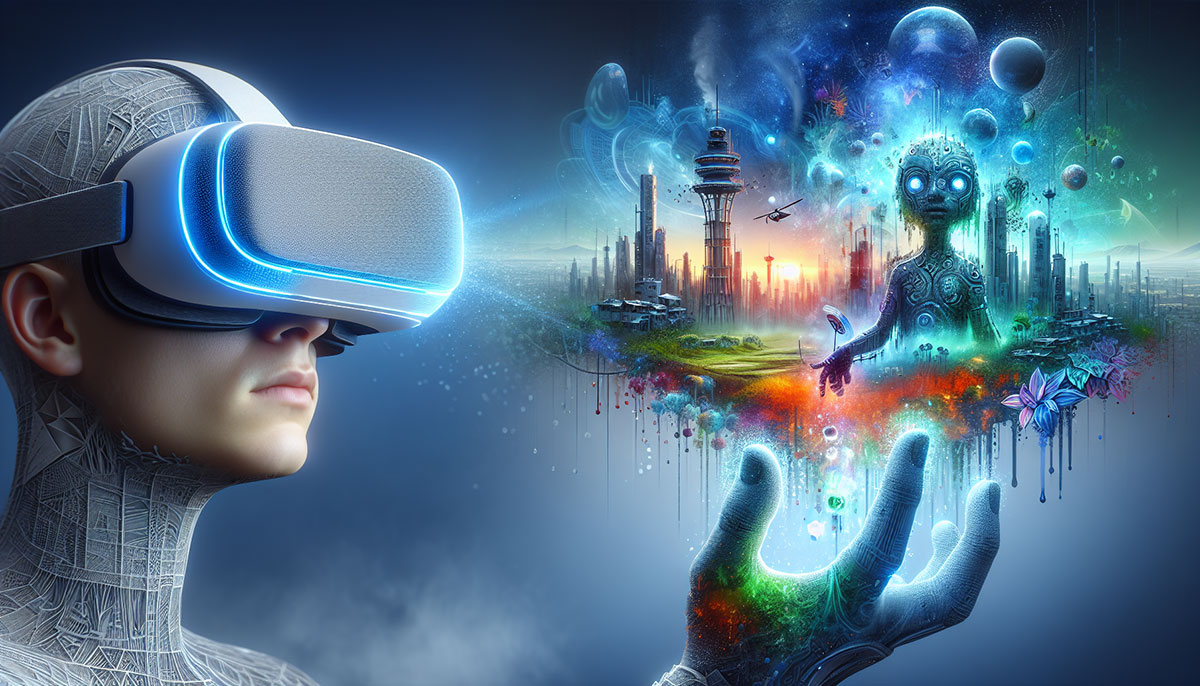 Generated by SurferAI
Generated by SurferAI
The future of commercial design introduces us to the synergy of virtual reality and 3D renderings, a combination that provides an immersive experience that evokes a sense of physical presence within the virtual design. This combination is more than a novelty; it facilitates better communication of complex designs to clients, allowing for a detailed and objective evaluation of the design’s functionality and aesthetics.
With the ability to accelerate the iterative design process, virtual reality makes visualization and modifications more efficient and convenient. Especially in sports facility design, the integration of virtual reality is anticipated to become a cornerstone for interactive and advanced design methodologies.
VR Tours for Commercial Spaces
Virtual reality tours are the cutting edge of property showcasing, transcending traditional images or simple video walkthroughs. These tours provide immersive and photorealistic experiences, allowing potential clients to explore a property virtually with lifelike accuracy.
Not only do immersive VR experiences streamline the design approval process, but they also allow stakeholders to give immediate and precise feedback on proposed commercial spaces.
Integrating VR into Marketing Strategies
The integration of virtual reality into marketing strategies creates memorable and impactful engagements with a brand, captivating clients and driving sales. These immersive VR experiences are influential in showcasing the features and benefits of commercial real estate in a unique and interactive way, which can significantly enhance a brand’s reputation and set it apart from competitors.
Choosing the Right Commercial 3D Rendering Services
Choosing the ideal commercial 3D rendering services is a critical decision for businesses, involving the evaluation of factors such as:
Quality
Expertise
Timelines
Budget
Customization
Flexibility
The ideal service provider would not only have a strong portfolio and a proven track record but also industry-specific experience and proficiency in standard software like 3ds Max, Maya, or Photoshop, ensuring better results tailored to the unique requirements of the client’s field.
Quality and Expertise
The quest for high-resolution images should be a priority when choosing a commercial 3D rendering service, as superior visual quality is paramount. A rendering company’s portfolio is a testament to their expertise and versatility, showcasing a diversity of high-quality:
interior renderings
exterior renderings
product visualizations
animations
Timelines and Budget
Determination of the cost of rendering services necessitates consideration of the project scale, the level of complexity and detail required, along with possible additional fees for extra modeling or revisions.
The urgency of the project completion can also impact the pricing structure of commercial 3D rendering services.
Customization and Flexibility
Rendering services that adapt to various software programs offer the following benefits:
Greater customization
Fulfill specific project needs more effectively
Facilitate cost savings by permitting adjustments in the digital stage, eliminating the expense of physical prototyping for design changes.
Case Studies: Successful Commercial 3D Rendering Projects
Commercial 3D rendering projects in real-life scenarios offer concrete proof of the value these services offer to businesses and industries. Technological advancements in 3D rendering have enabled the creation of highly detailed and realistic images, contributing to the success of commercial projects by enhancing visual communication.
Office Buildings and Business Centers
The PWC Offices in Greece, with their unique twisting structure, were brought to life through both aerial and street view 3D renders to complement the environment and enhance the local skyline.
The Hayy Al Sharq Development in Oman employed 29 3D visuals to effectively market and illustrate the project’s vision, benefiting the commercial aspects such as office spaces.
Retail Spaces and Shopping Malls
In Tampa, Florida, 3D renders were instrumental in presenting six distinct design concepts for a combined parking garage and retail space, allowing for clear comparisons and ensuring that the new project complements the adjacent building’s architecture.
In the development of commercial space, 3D rendering is instrumental in creating captivating visuals that engage and inform stakeholders.
Sports Complexes and Recreational Facilities
During the design phase of sports complexes and recreational facilities, commercial 3D rendering is an invaluable tool for creating realistic and immersive visualizations. Stakeholder engagement and communication are significantly enhanced through the use of detailed 3D renderings in sports facility development.
Summary
In summary, the transformative power of commercial 3D rendering services is evident across various industries, from the intricate details of industrial visualization to the expansive vistas of landscape renderings. These services not only enhance visual communication but also play a crucial role in marketing and sales strategies, providing businesses with a competitive edge. The integration of virtual reality offers a new dimension of immersive experience, further solidifying the importance of commercial 3D rendering in today’s digital landscape. As we’ve seen through multiple case studies, the right application of 3D rendering can significantly impact project success, from securing pre-sales and investments to increasing engagement in marketing campaigns.
Our location
Turning Industrial Visions into Clear Imagery
2025 © Rendergeek. All Rights reserved. |Sitemap|Privacy Notice